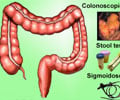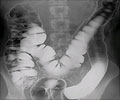The incidence of colorectal cancer among adults younger than age 50 years is on the rise, according to a new study
The incidence of colorectal cancer among adults younger than age 50 years is on the rise, according to a new study.
The authors theorize that these increases may be related to rising rates of obesity and changes in dietary patterns, including increased consumption of fast food. The study, which appears in the June 2009 issue of Cancer Epidemiology Biomarkers and Prevention, says further studies are necessary to elucidate causes for this trend and to identify potential prevention and early detection strategies.Overall incidence rates for colorectal cancer in the United States have been on the decline since the mid-1980s, with the drop accelerating in the most recent time period. Rates are now dropping 2.8 percent per year in men and 2.2 percent per year in women, largely due to an increase in screening, particularly colonoscopy, among individuals ages 50 years and older. Screening can reduce colorectal cancer incidence by detecting and removing polyps before they become cancerous. But recent incidence trends among adults younger than 50 years, for whom routine screening is not recommended, have not been analyzed thoroughly. A previous study did find an increase in incidence from 1973 to 1999 for all races combined, but that study did not include 40 to 49 year-olds, who represent 73 percent of colorectal cancer patients under age 50.
In a new analysis, American Cancer Society researchers led by Rebecca L. Siegel, M.P.H., looked at trends in colorectal cancer incidence rates between 1992 and 2005 among young adults (ages 20 to 49) by sex, race/ethnicity, age, stage at diagnosis, and anatomic subsite. The study found that among individuals ages 20 to 49, incidence rates of colorectal cancer increased 1.5 percent per year in men and 1.6 percent per year in women from 1992 to 2005. Among non-Hispanic Whites, rates increased for both men and women in each 10-year age grouping (20-29, 30-39, and 40-49 years) and for every stage of diagnosis. They found the largest annual percent increase in colorectal cancer incidence was in the youngest age group (20-29 years), in whom incidence rates rose by 5.2% per year in men and 5.6% per year in women. They say the rises are due to an increase in left-sided tumors, particularly in the rectum.
The researchers address several possibilities for the rise, including rising rates of obesity, which is a major risk factor for colorectal cancer. Dietary factors may also come into play. The researchers note that between the late 1970s and the mid-1990s, fast-food consumption in the United States increased 5-fold among children and 3-fold among adults. A diet high in fast food is associated with both greater meat consumption and reduced milk consumption. Increased consumption of red and processed meat has been shown to increase risk of cancers of the distal colon and rectum, while milk and calcium consumption have shown a protective effect against the subsites in which the rise in incidence was most prominent. They say it is plausible that the emergence of unfavorable dietary patterns in children and young adults over the past three decades may have contributed to the increase in CRC among young adults observed in the study.
The authors conclude: "The disparate increase in left-sided CRC suggests that particular attention be given to studies to elucidate the behavioral and environmental risk factors responsible for this trend and potential prevention and early detection strategies."
Advertisement
RAS















